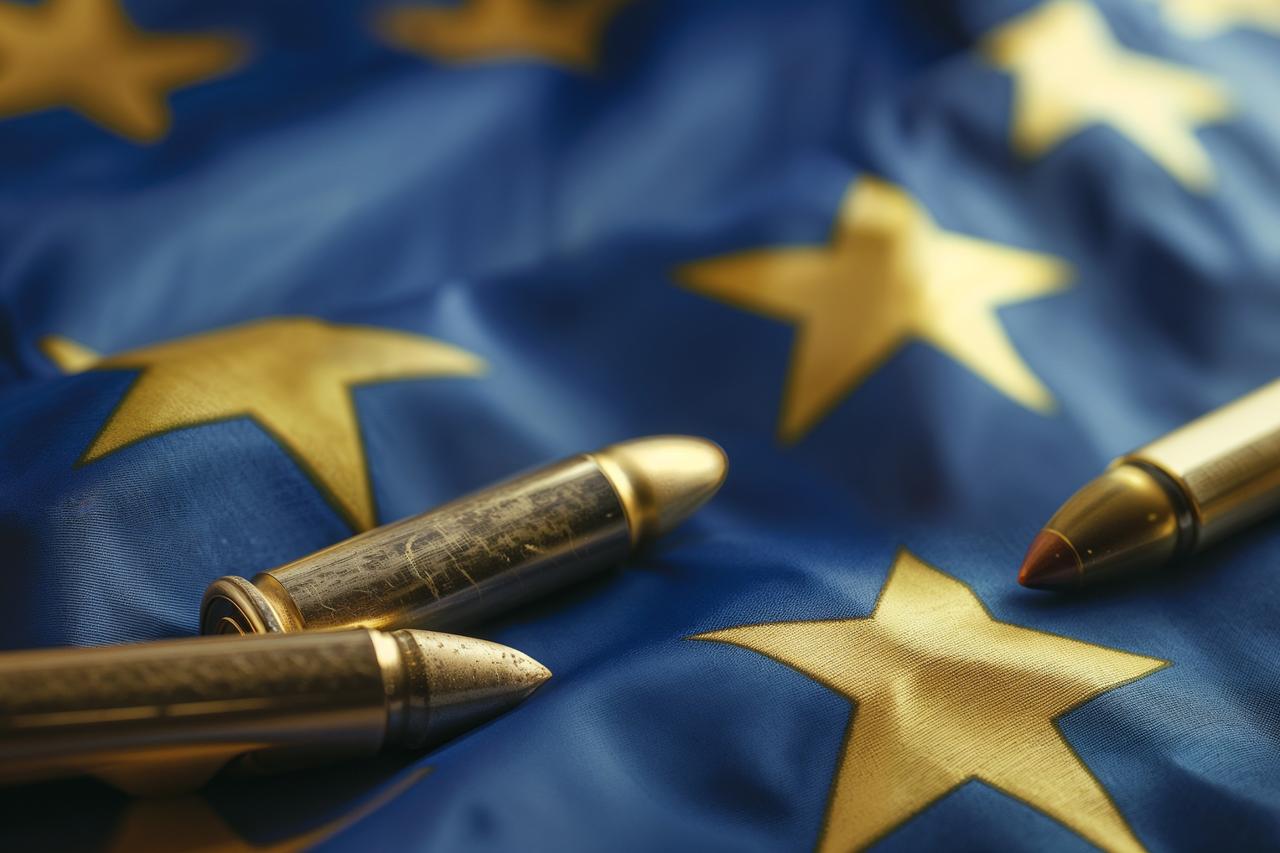
The total defense expenditure of the 27 European Union member states is set to reach a record €381 billion ($443.35 billion) in 2025, according to the European Defence Agency (EDA).
The EDA released its report titled “2024-2025 Defence Data”, which provides a detailed analysis of EU member states’ defense budgets. The report noted that in 2024, total defense spending increased by 19% compared to 2023, reaching €343 billion.
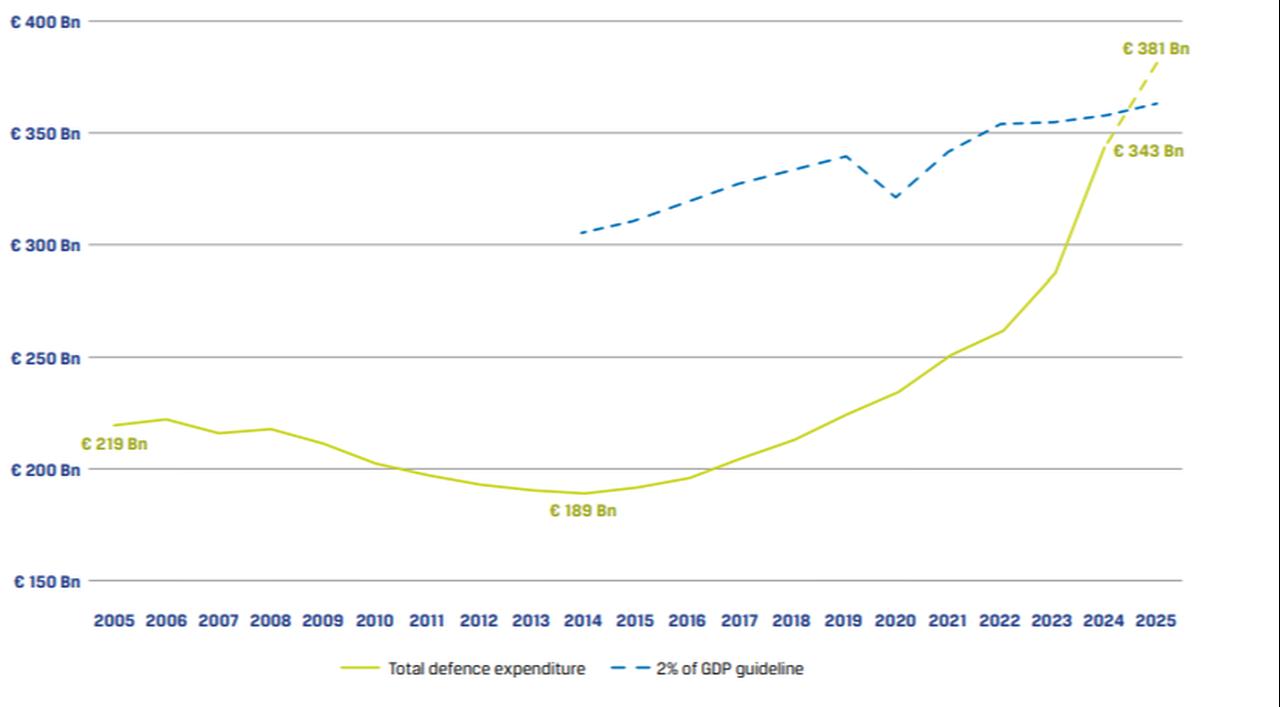
The report highlighted that last year’s total defense spending accounted for 1.9% of the EU countries’ gross domestic product (GDP). This increase was driven by record-level equipment purchases and higher investment in research and development. For the first time, defense investment spending exceeded €106 billion in 2024, representing 31% of total expenditure—the highest proportion since data collection began.
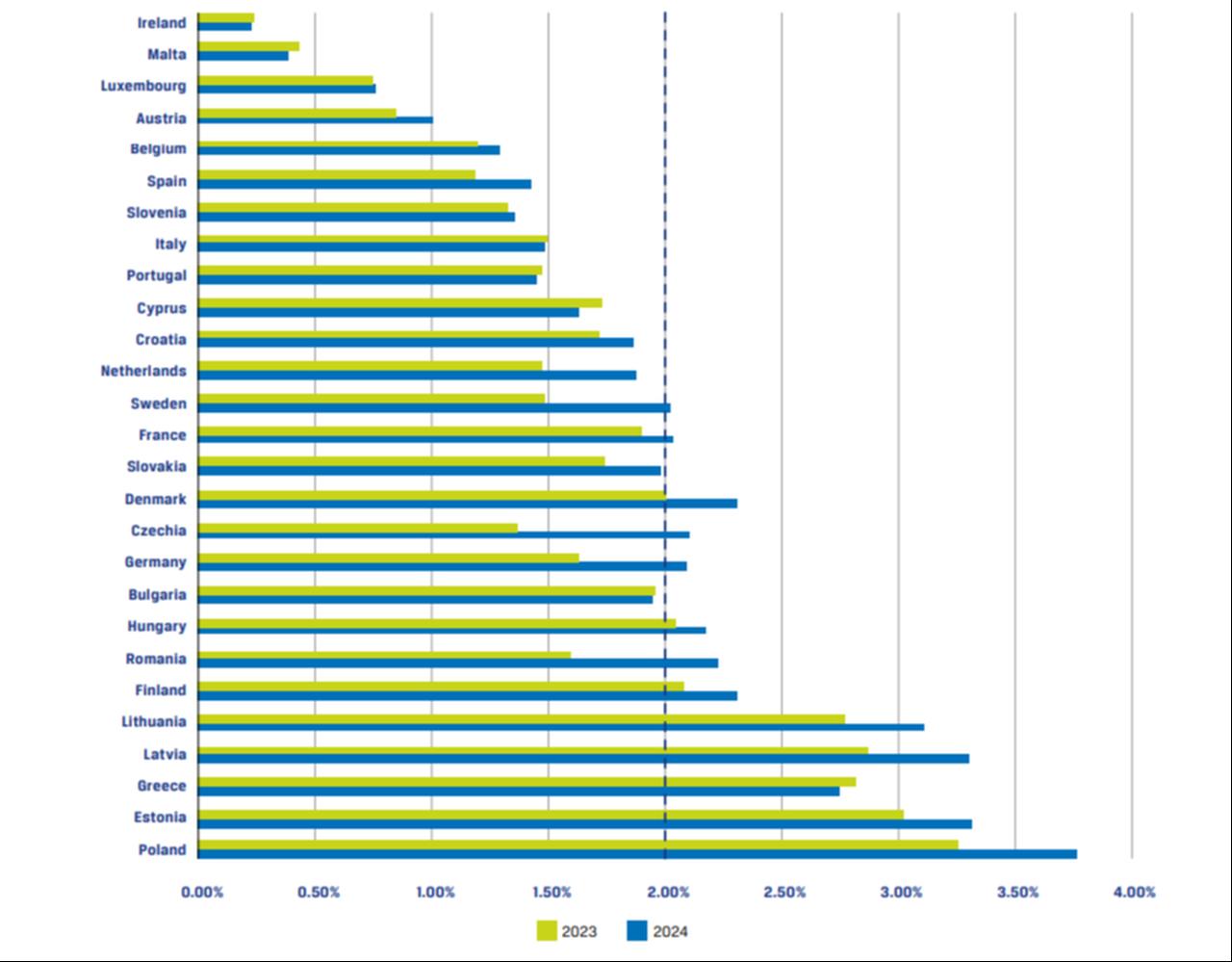
The upward trend is expected to continue in 2025, with investment spending projected to approach €130 billion. Overall, total defense expenditure across EU countries is forecast to account for 2.1% of GDP this year.
The report emphasized that EU member states are responding to a changing security environment by enhancing their military capabilities. Investments are being prioritized to ensure that member states possess the necessary military capacity for defense and deterrence, leading to increased spending to strengthen armed forces.
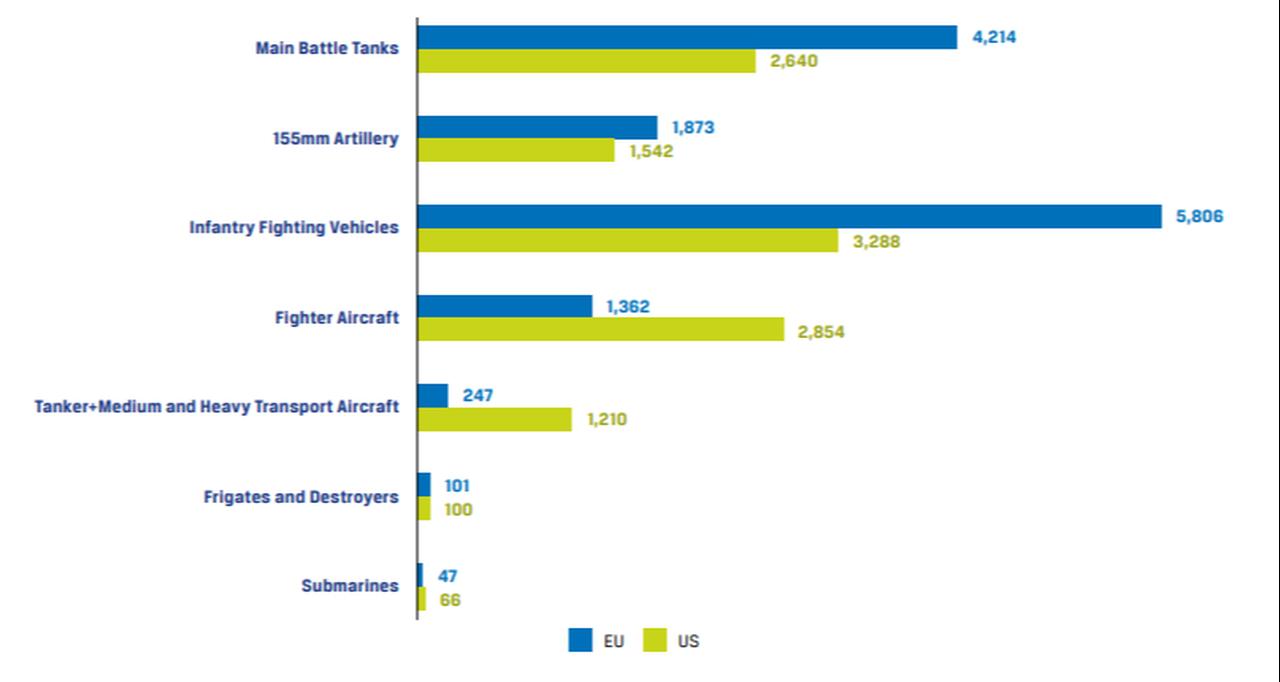
According to the report, despite EU member states’ continued efforts to strengthen their armed forces, other major powers—particularly the U.S.—still outspend Europe by a significant margin.
EU vs US defense spending
In 2024, the U.S. allocated €845 billion ($909.5 billion) to defense, equivalent to 3.1% of GDP—nearly three times the EU MS total of €343 billion. Since 2008, the U.S. has consistently spent more than 3% of GDP on defense. In contrast, EU states spend individually, resulting in fragmentation, duplication, and reduced efficiency.
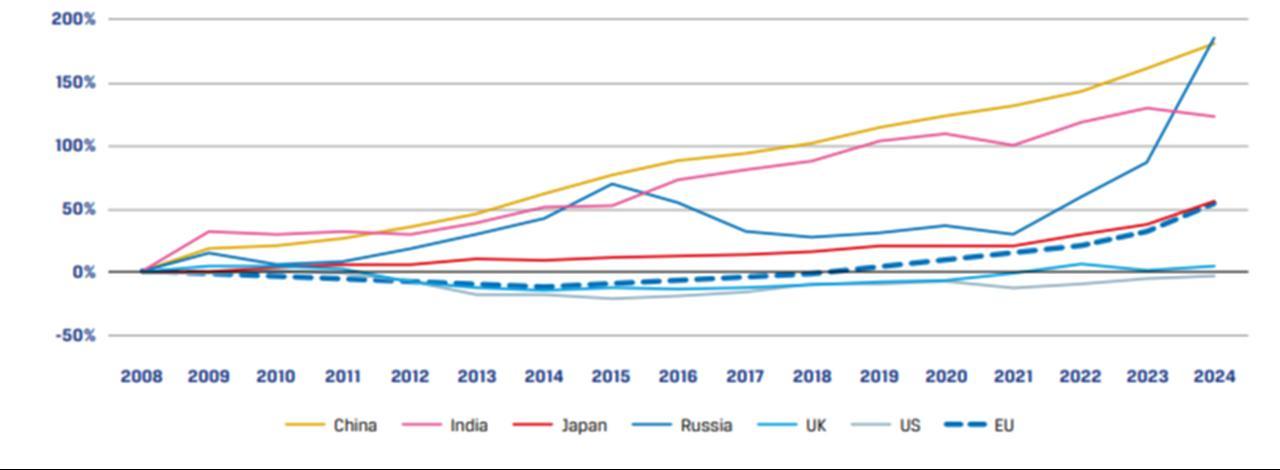
The report notes that EU countries operate more main battle tanks, artillery, and infantry fighting vehicles than the U.S., but across many different models, creating logistical and operational challenges. Fragmentation is also apparent in naval and air capabilities, with limited strategic air mobility due to fewer tanker and transport aircraft. These inefficiencies stem from legacy systems, unaligned planning cycles, and industrial constraints.
EDA highlights that coordinated EU-level defense planning and procurement, supported by financial incentives, could reduce fragmentation and improve operational efficiency over time.
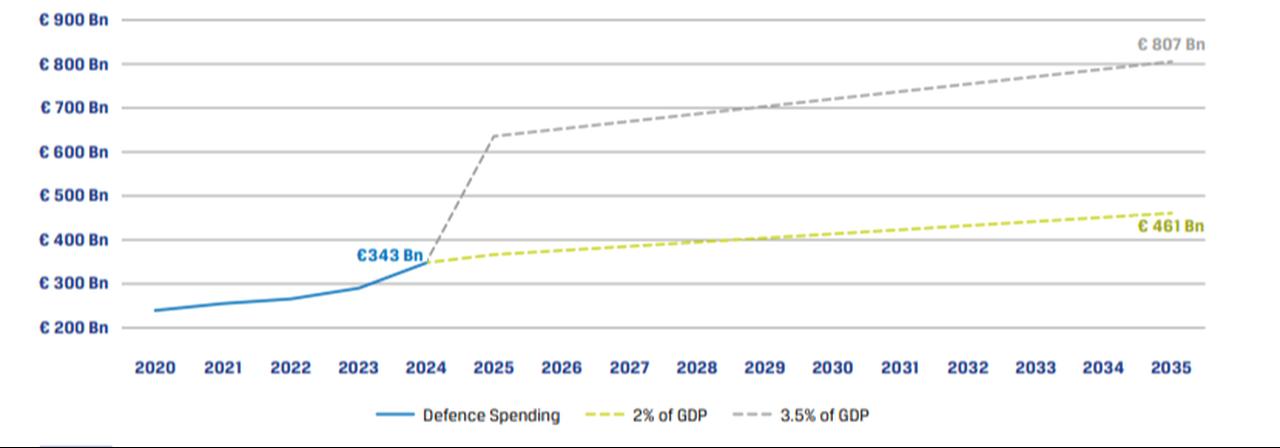
NATO targets and future investments
Geopolitical developments have encouraged EU states to not only meet NATO’s 2% GDP defence spending target but also consider raising it. At the NATO summit in The Hague in June 2025, allies agreed to a long-term target of 5% of GDP annually by 2035, including:
Achieving the 3.5% target would require an additional €254 billion, bringing EU defence spending to approximately €635 billion. This would mark a major step in strengthening Europe’s defence and deterrence capabilities in the face of current global security challenges.